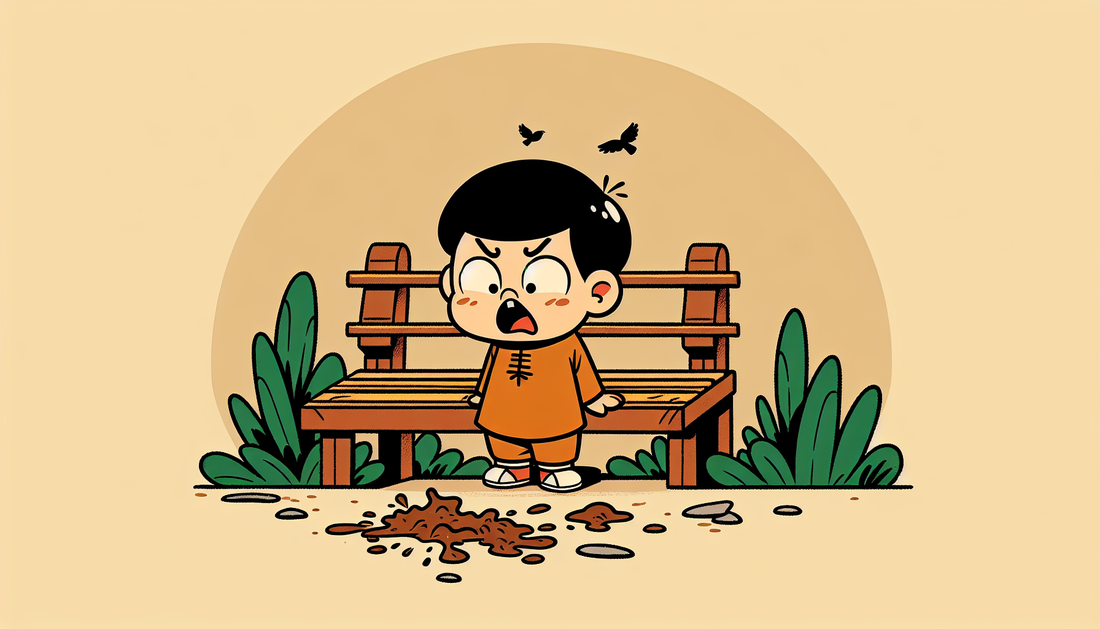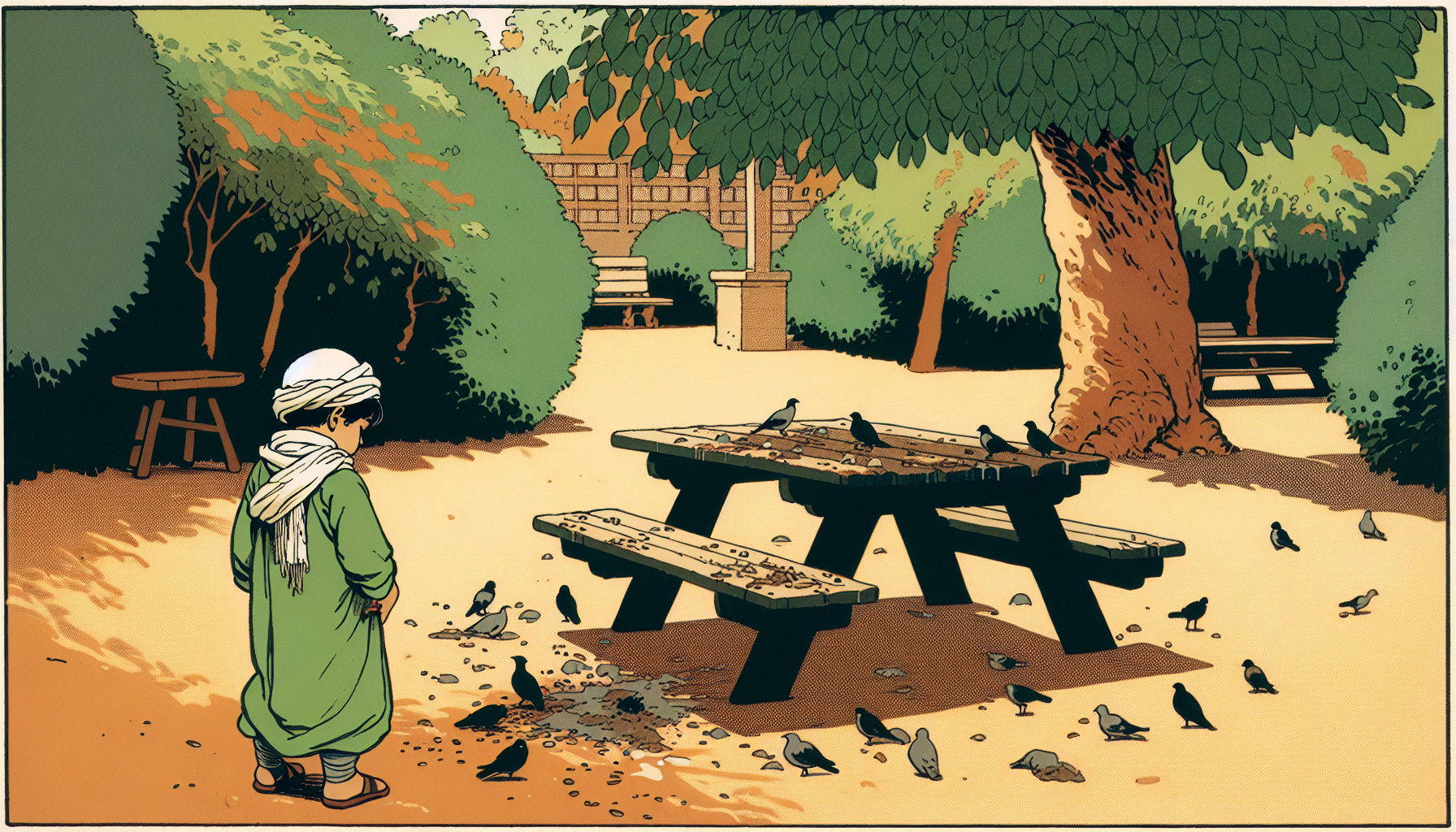
Bird droppings in the garden: remove them hygienically and preserve nature
Anyone who loves their garden knows the problem: birds chirping, landing on railings or furniture - and leaving traces behind. Bird droppings in the garden are not only unsightly, they can contain germs, attack materials and disrupt everyday life. At the same time, birds are protected beneficial insects that decimate pests and bring life to the garden. This guide shows you how to manage bird droppings in the garden in a legally compliant, hygienic and environmentally friendly way. You will find out which health aspects are really relevant, what applies to bird protection in Germany and which measures work in practice - from perch management and planting planning to smart technology such as weatherproof Wi-Fi cameras. Step-by-step instructions on cleaning, seasonal differences and typical mistakes help you to implement them in everyday family life. In this way, you can preserve the joy of nature while keeping control of particularly affected areas around the patio, balcony, paths and play equipment.
How does bird droppings affect health?

Health risks from bird droppings
Bird droppings consist of digestive residues and uric acid crystals and can contain bacteria, fungi and, more rarely, parasites. The risk increases particularly in hotspots with many animals or permanently soiled areas, for example on balcony parapets, feeding areas or under popular perches. The type of contact is decisive: inhalation of dusty, dried out residues or contact with minor skin injuries is more critical than brief, moist contact.
The following pathogens are mentioned in connection with bird droppings
:- Chlamydia psittaci, trigger of ornithosis with flu-like symptoms and coughing
- Salmonella, particularly relevant in combination with poor kitchen hygiene and warm temperatures
- Cryptococcus neoformans, a yeast fungus that can be found in pigeon droppings and is significant in immunocompromised people
For most healthy people, bird droppings in the garden are easily manageable with prudent behavior. Anyone who develops symptoms after contact or is immunocompromised should seek medical advice. Information from the Robert Koch Institute on ornithosis and salmonellosis provides a reliable guide for classifying the risk. ([rki.de](https://www.rki.de/DE/Content/Infekt/EpidBull/Archiv/2024/10/Art_02.html?utm_source=openai))
Symptoms and illnesses associated with bird droppings
Possible symptoms include fever, headache and aching limbs, dry cough or shortness of breath and gastrointestinal complaints. Infection usually occurs via the respiratory tract or mouth, for example when inhaling dust or via contaminated hands. Self-limiting courses are typical, but young children, pregnant women, senior citizens and immunocompromised people should be particularly vigilant. ([rki.de](https://www.rki.de/DE/Aktuelles/Publikationen/RKI-Ratgeber/Ratgeber/Ratgeber_Salmonellose.html?utm_source=openai))
Why is protection from bird droppings important?
Legal regulations on bird protection in Germany
All native bird species are protected by law in Germany. The Federal Nature Conservation Act prohibits the destruction of nests, the disturbance of breeding birds and the disturbance of habitats without good reason. Work on nests should always be carried out outside the breeding season and, in case of doubt, requires clarification from the authorities. ([gesetze-im-internet.de](https://www.gesetze-im-internet.de/bnatschg_2009/BJNR254210009.html?utm_source=openai))
Anyone who wants to reduce bird droppings in the garden should therefore rely on gentle deterrence and clever placement rather than harshness. The aim is to make resting and landing places unattractive without harming animals or disturbing the brood. In this way, practical protection and species conservation harmonize - an important basis for peaceful coexistence in your own green space. ([gesetze-im-internet.de](https://www.gesetze-im-internet.de/bnatschg_2009/BJNR254210009.html?utm_source=openai))
Importance of birds in the garden ecosystem
Birds eat insects and caterpillars, carry seeds, pollinate indirectly and enrich biodiversity. Instead of completely eliminating birds, a good plan focuses on mitigating typical droppings hotspots. In this way, bird droppings in the garden remain manageable, while beneficial insects continue to do valuable gardening work.
What measures help to minimize bird droppings in the garden?
Preventive measures to avoid bird droppings
Start at the main places where bird droppings regularly land in the garden. Landing and perching areas can be made uncomfortable by using sloping ledges, teetering poles or taut, thin wires. Reflectors, fluttering ribbons and alternating points of light have a short-term deterrent effect and help them to become acclimatized.
If necessary, adjust the choice of plants, as heavily fruiting trees and shrubs attract visitors. As a rule, feeding stations belong in the cold season and not directly next to the patio, play equipment or balcony furniture. Place water points such as bird baths a few meters away from seating areas so that the main activity does not take place at the coffee table.
- Defuse seating areas and make railings unattractive
- Use reflectors, ribbons and wind chimes intermittently
- Deliberately control and move plant and food sources
- Place watering troughs and baths away from the areas where birds spend time
Ways to specifically reduce bird attractiveness
In particularly attractive gardens, a combination of small measures over several weeks can help. Nets over very popular droppings platforms such as patio roofs or balconies prevent landings, provided they are stretched professionally and in an animal-friendly manner. Move nesting boxes to less sensitive locations, for example to the back of the garden shed, as long as no brood is disturbed. ([gesetze-im-internet.de](https://www.gesetze-im-internet.de/bnatschg_2009/BJNR254210009.html?utm_source=openai))
Cleaning is part of prevention: Never sweep away droppings dry, but moisten them, leave them to soak for a few minutes and then wipe them up with paper or cloth. Use water and a mild, pH-neutral cleaner, rinse and wash your hands; aggressive chemicals are usually unnecessary and harmful to materials. ([umweltbundesamt.de](https://www.umweltbundesamt.de/umwelttipps-fuer-den-alltag/haushalt-wohnen/reinigung-im-haushalt?utm_source=openai))
How can I combine birdwatching with technology?
Selecting and installing surveillance cameras in the garden
Smart use of cameras helps to identify hotspots for bird droppings in the garden and to understand behavior patterns. Look out for Wi-Fi, reliable motion detection with notifications, night vision and a weatherproof design with protection class IP66 or higher. Install the camera with low vibration, weather protection and in such a way that public areas or neighboring properties are not covered.
From a legal perspective, private video surveillance is generally based on the balancing of interests in accordance with Article 6(1)(f) GDPR. § Section 4 BDSG primarily addresses publicly accessible areas and is to be interpreted narrowly for private purposes according to case law; consistently direct the field of vision towards your property and minimize the storage period. ([gesetze-im-internet.juris.de](https://www.gesetze-im-internet.juris.de/bdsg_2018/__4.html?utm_source=openai))
- Wi-Fi and app access for live image and notifications
- Use motion detectors with zones and privacy masks
- Night vision and IP66 housing for permanent outdoor use
- Limit the field of vision to your own area and keep storage periods short
Tips on technical equipment and power supply
Solar-powered cameras are low-maintenance and suitable for sunny locations; shady locations benefit from a rechargeable battery or mains adapter. Plan the installation height so that cleaning and alignment can be carried out easily. Check regularly whether cobwebs, rain or direct sunlight trigger false alarms and adjust the sensitivity and time schedules.
What mistakes should be avoided when dealing with bird droppings?
Common misconceptions about bird droppings and health
Bird droppings in the garden are often simultaneously underestimated and overestimated. Not every contact is dangerous, but inhaled dust or poor hand hygiene increase the risk. A prudent approach is often sufficient: Dampen surfaces, pick up, dispose of, wash hands and, if necessary, rework surfaces with a mild cleaner. ([rki.de](https://www.rki.de/DE/Aktuelles/Publikationen/RKI-Ratgeber/Ratgeber/Ratgeber_Salmonellose.html?utm_source=openai)
)- "Only pigeons are risky" - other species can also carry germs
- "Disinfection with chlorine is mandatory" - water and mild detergents are usually sufficient
- "High-pressure cleaners are ideal" - can form aerosols and damage materials
Wrong reactions when bird droppings appear in the garden
Do not use your bare hands, but use gloves and, if possible, a mask for dusty old dirt. Sweeping or blowing away when dry disperses respirable particles, so always moisten and wipe off gently. For porous stone or wood, use a soft brush and pH-neutral cleaner instead of damaging surfaces with aggressive agents. ([umweltbundesamt.de](https://www.umweltbundesamt.de/umwelttipps-fuer-den-alltag/haushalt-wohnen/reinigung-im-haushalt?utm_source=openai))
Conclusion: How to keep control of bird droppings in the garden
With clever measures, bird droppings in the garden can be easily controlled without displacing birds. Legal consideration, hygienic routines and targeted changes to perching and landing areas will bring rapid improvements. Technology such as weatherproof WLAN cameras support root cause analysis and help to combine measures effectively.
Start with two or three adjustments and observe the effect over a few weeks. Readjust, clean regularly and move feeding and water points away from sensitive areas. This will create a balanced coexistence of bird diversity and a clean patio - get started now and enjoy nature. ([gesetze-im-internet.de](https://www.gesetze-im-internet.de/bnatschg_2009/BJNR254210009.html?utm_source=openai))
